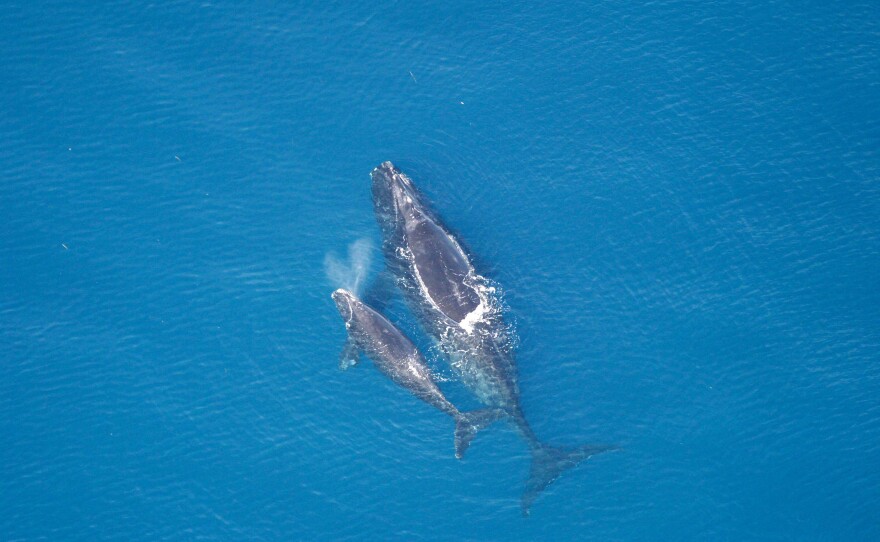The federal government is considering 10 applications for offshore oil and gas exploration along the U.S. Eastern Seaboard.
The Florida Department of Environmental Protection has asked to delay the permits for further impact studies.
Neil Armingeon says just a few years ago, he didn’t know about seismic airgun testing, a standard method of mapping oil and gas deposits in deep sea beds. Today, though, it’s one of his top priorities.
“What we want people to know is this is no longer hypothetical. This could be the precursor to oil-and-gas drilling off the Florida coast,” Armingeon said.
Armingeon is the Matanzas Riverkeeper. He’s helped organize many events about seismic testing in the First Coast, like one last October in St. Augustine.
Protesters stood at the base of the Bridge of Lions to wave signs and hold a press conference about the little-known issue. Since then, seismic testing has gained public traction.
“Look, here’s one thing that I think everybody knows: there’s a cost to all of this,” Armingeon said. “The BP spill, I think, helped people understand this is the cost.”
In 2012, the Obama administration banned new offshore drilling on the Outer Continental Shelf. That ban expires in 2017, and oil companies are hoping to locate deposits before the moratorium expires. Currently, eight companies are requesting permits to conduct seismic testing along the US Eastern Seaboard. Testing advocates say if there’s oil offshore, it could bring revenue and new jobs and help reduce dependence on foreign oil.
But in St. Johns County, seismic testing and offshore drilling faces heavy opposition. Oil drilling aside, it’s the process and technology of seismic testing that have many worried. Submerged air guns emit loud sonic blasts to map the sea floor. The sound has been compared to a rocket launching.
Danger to marine life
Erin Handy, the Florida campaign organizer for a group called Oceana, says it’s dangerous for animals living underwater.
“For a human to be that close to [the] sound, you’d be deafened,” Handy said.
“It’s very, very disturbing to marine mammals — dolphins and whales — who communicate, migrate, operate and really survive using sonar,” Handy said. “Imagine if the largest noise generated by humans was going off every ten seconds, 24 hours a day for weeks on end above your house.”
Especially at risk is the North Atlantic Right whale, she says. It’s one of the world’s rarest whale species, and it swims south to give birth — right in the proposed blasting zones. The Bureau of Ocean Energy Management estimates testing could injure 138,000 marine animals, disrupt behavior in 13.5 million and interrupt breeding patterns of many other species. Environmental groups think that’s a conservative estimate.
An economics decision
In St. Augustine Beach, Mayor Andrea Samuels says her city has joined 17 other coastal Florida cities in passing resolutions against seismic testing.
“That’s because our economy is based on the health of our ocean,” Samuels said.
Samuels praises Democratic Florida Senator Bill Nelson and Democratic Representative Kathy Castor, who’ve both introduced federal bills limiting oil and gas exploration off Florida.
Samuels said, “We need to be active. We need to be engaged. This cannot go forward.”
She said, “I do not want to have to worry about tar balls and explosions and tumors and dead animals. We need to fulfill our obligations to the place where we live and protect them.”
St. Augustine Beach is one of 56 U.S. Atlantic-coast cities that oppose seismic testing.






